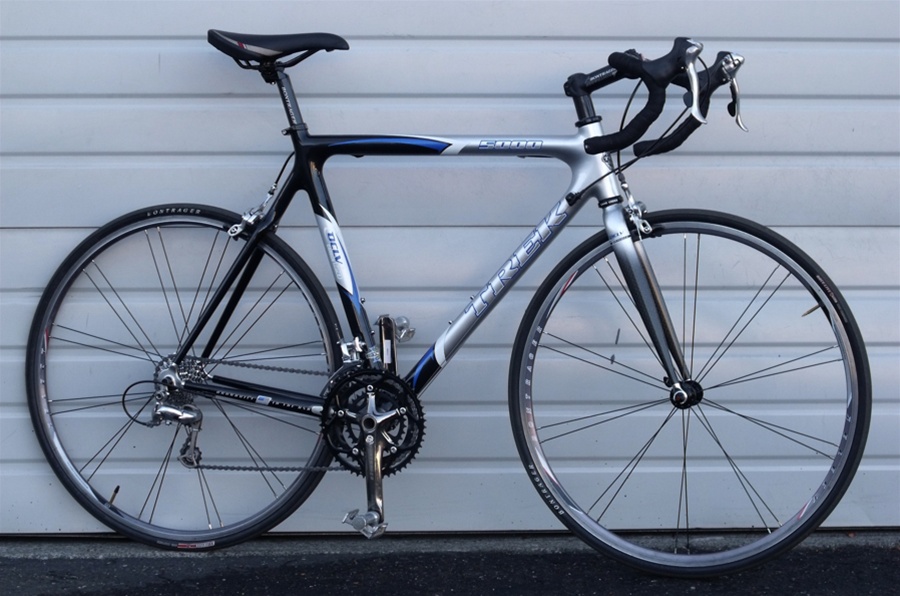

The cables are tucked away in the handlebars and frame, while the rear brake has been relocated to the underside of the chainstays. The design of the Madone focuses on aerodynamics instead. As a result, Trek promises a lot more comfort for the Domane rider compared to the Madone. This hinge allows the seat tube to flex under load, providing a small amount of travel for the seat, and thus, a measure of shock absorption. The Domane is further distinguished from the Madone by its IsoSpeed decoupler, a hinge that anchors the seat tube to the top tube of the frame. For more details, see the complete geometry tables for the Madone and Domane. The Domane has an even taller headtube and relatively shorter top tube for every frame size, as shown in the charts below:Īnother 0.7-0.8cm can be added to the stack of the Domane thanks to a lower bottom bracket (Madone BB drop 6.8 to 7.2cm compared to 7.5 to 8.0cm for the Domane). The Madone has reasonably aggressive race geometry moderated by Trek’s H2 fit, which utilises a taller head tube compared to its pro-level H1 fit. The Domane shares the same wheels, tyres, saddle and stem, but uses Bontrager’s Race Lite IsoZone bars and Shimano’s Ultegra brake calipers. The Madone gets Race Lite Aero handlebars, Race X Lite stem, Race Lite wheels with R3 Hard-Case Lite tyres, an Affinity Race Lite saddle that features hollow titanium rails, and Speed Limited direct-mount brake calipers.
2008 TREK OCLV CARBON 120 SERIES
Buyers prepared to spend $4,999 for a Madone 5.9 can have the bike with mechanical Dura Ace, Ultegra Di2, or SRAM Red, while the Domane 5.9 is available with either mechanical Dura Ace or Ultegra Di2.īontrager supplies the same suite of parts for each 5.9 Series build. Trek offers a variety of builds for its higher series (4 and above) road bikes and for the 5 Series, there are four builds for the Madone and three for the Domane. This blend sits in the middle of the range of five OCLV blends utilised by Trek and is described as the best available outside of the USA. The 5 Series Madone and Domane are both made in Asia using Trek’s 500 Series OCLV carbon.

The two bikes share the same price ($4,999) and essentially the same build kit (11-speed Ultegra Di2 with Bontrager wheels), but they are designed with very different intentions: the Madone is a race-ready rig offering pro-level performance, while the Domane promises all-day comfort, regardless of the terrain. Pricing for the Domane is similar, starting at $1,799 for a 2 Series and rising to over $14,000 for a custom 6 Series Domane.įor this review, Trek Australia supplied a Madone 5.9 and a Domane 5.9. The price and specifications for each model increase with the series number, such that a 2 Series Madone costs $1,599 compared to more than $14,000 for a custom-painted and -specified 7 Series Madone. Likewise, the Domane accounts for the majority of the Endurance Road category in which there are four models (2, 4, 5, 6 Series). The Madone populates the majority of the Performance Road category in which there are six models (2-7 Series). Trek’s road bike range is separated into two broad categories: Performace Road versus Endurance Road. All of Trek’s high-end 6 and 7 series road bikes are manufactured by the Waterloo facility, which also houses Trek’s research and development operations.

The company still operates a manufacturing facility in Waterloo, Wisconsin in addition to partnering with Asian manufacturers. The company’s subsequent growth was assisted first by the mountain biking boom of the late-80s and early-90s, then, by its early adoption of carbon fibre, followed by the success of Lance Armstrong at the Tour de France. The company was born in 1976, when Dick Burke and Bevel Hogg started with steel touring frames, and by 1982, they were manufacturing their own road bikes. In this review, CTech Editor Matt Wikstrom rides both models in Trek’s 5 Series to see what they have to offer. The former is fashioned for performance, while the latter is devoted to endurance. With the Madone and Domane, Trek offers riders a choice of two very different road bikes.


 0 kommentar(er)
0 kommentar(er)
